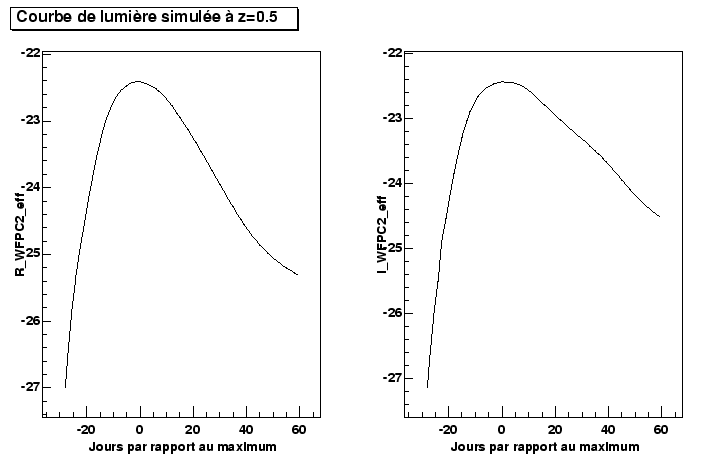We can thus write for an effective filter ![]() and a shift towards red Z:
and a shift towards red Z:
where ![]() the distance from luminosity given by equation 9.4 shows a simulation of lightcurve of a supernova to a redshift of 0.5.
the distance from luminosity given by equation 9.4 shows a simulation of lightcurve of a supernova to a redshift of 0.5.
 |
This simulator of lightcurve will enable us to adjust the parameters of our lightcurves. Let us see finally how we take account of the absorption of the light by the clouds of dust in our galaxy.